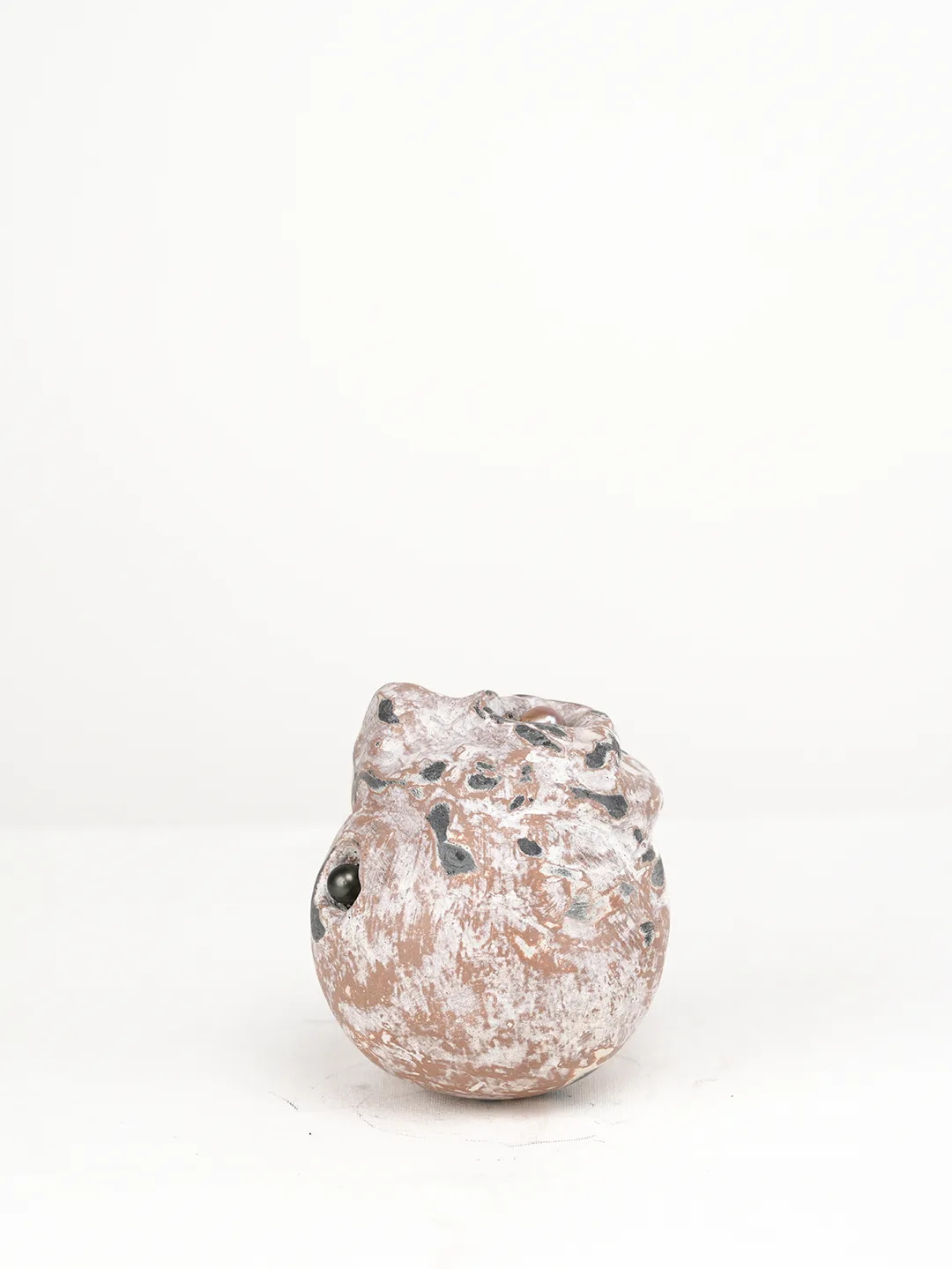至今依然清晰地记得Weiwei是如何郑重其事向我介绍Meng的,“Meng画画、做装置、写诗,
他是从普鲁斯特时代出来的年轻人!”很难不让人心生好奇,于是我们一起去了Meng位于伦敦
西岸的工作室……那是2019年,转眼,5年过去了。
这5年间发生了很多事,疫情阻断了3年后,Meng 去日本学习能剧面具的制作,在上海南柯画
廊做了个展,去巴拿马参加驻地项目……而我的变化也很大,主理R PLUS画廊之后很是希望
Meng来做个展,邀约我们共同的朋友Weiwei来做策展人,他趁着回国之际来了一趟天目里,
这事儿就成了。
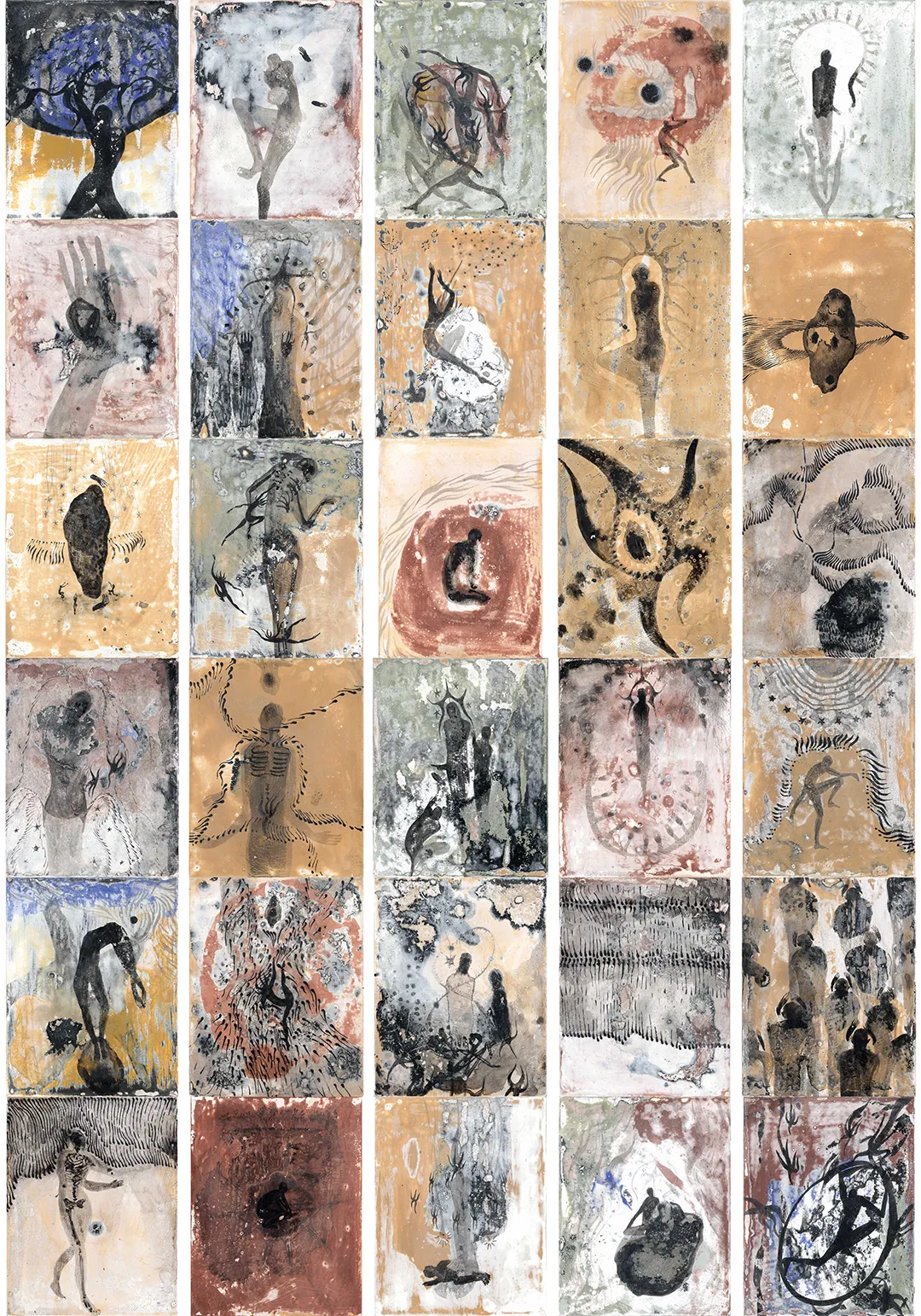
「尘世间」(1-30)
18h x 14w cm
神奇的是,Weiwei在巴黎的家和Meng伦敦的工作室竟然来往便利,在过去的几年,Weiwei经
常坐欧洲之星穿过英吉利海峡,辗转地铁到Meng的工作室,那是属于Meng“尘世外”的世界,
她有时候给Meng做小工,处理各种稀奇古怪的材料,有时候说一些只有他们自己听得懂的“黑
话”,Weiwei把这些都记录在手机备忘录里。
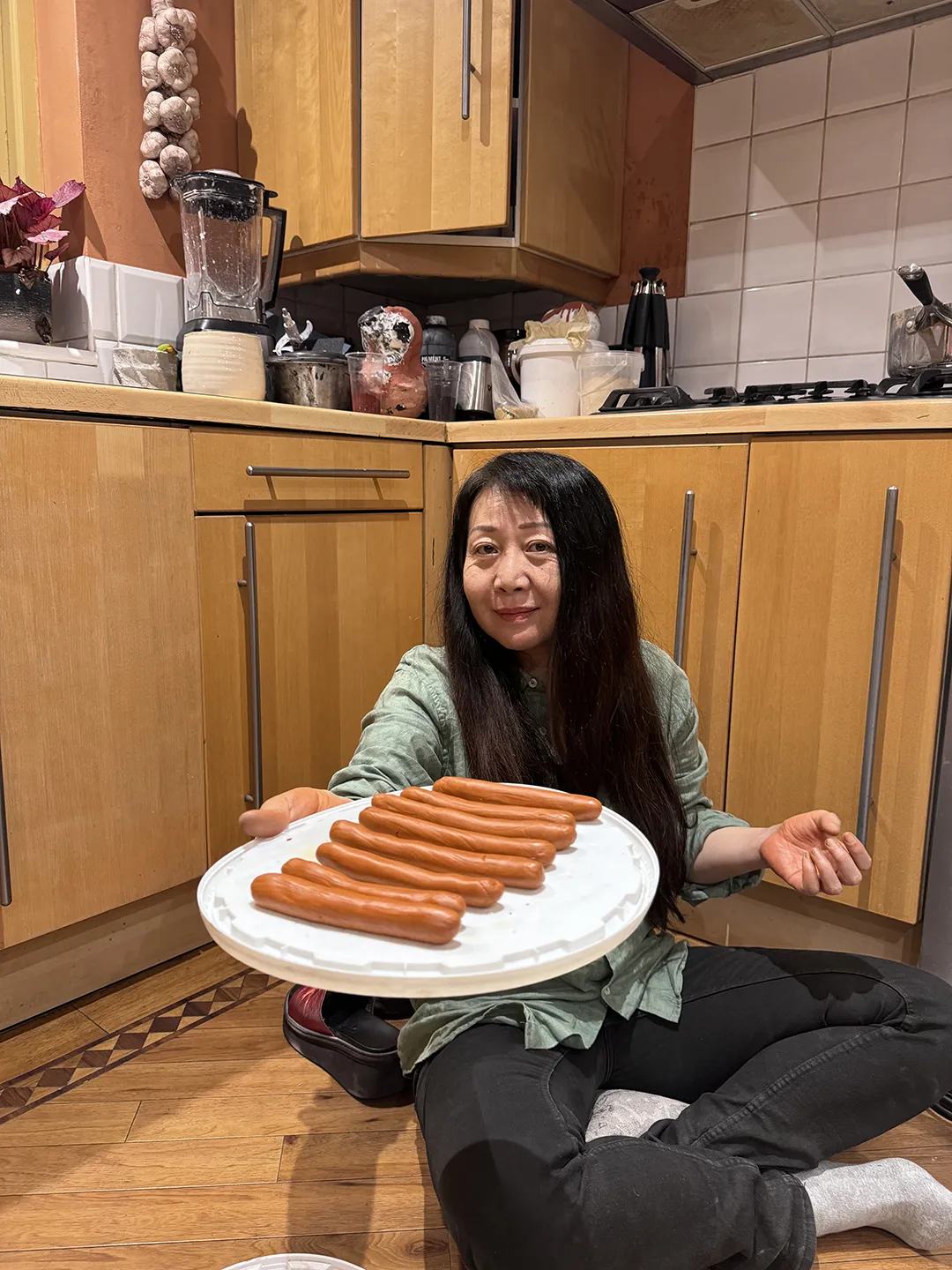
策展人Weiwei
这几年,从埃及到摩洛哥,从危地马拉到巴拿马,再到南美洲,Meng四处采集材料和故事,
探知未知的事物,“遍地都是生命,从无机物到有机物,从有机物又到无机物,生命跟环境是
一体的,然后再往天空看感觉又是流星划过,其实有一天地球如果变成流星了,好像天地人
是一体的,只是你是不同时间的切面。”
Meng 正在慢慢构建他的世界,「尘世外」这三个字非常贴切他智性而充满生命伤感的状态。
离5月26日开幕的时间越来越近了,届时邀请大家在一个黑盒子般的空间里,体验时间的碎片
相互碰撞发出来的声音。
以下是Weiwei片段式的记录,时间线被刻意模糊了,8个关键词串连起艺术家Meng有关对时
间沉淀的某种收藏和执念。
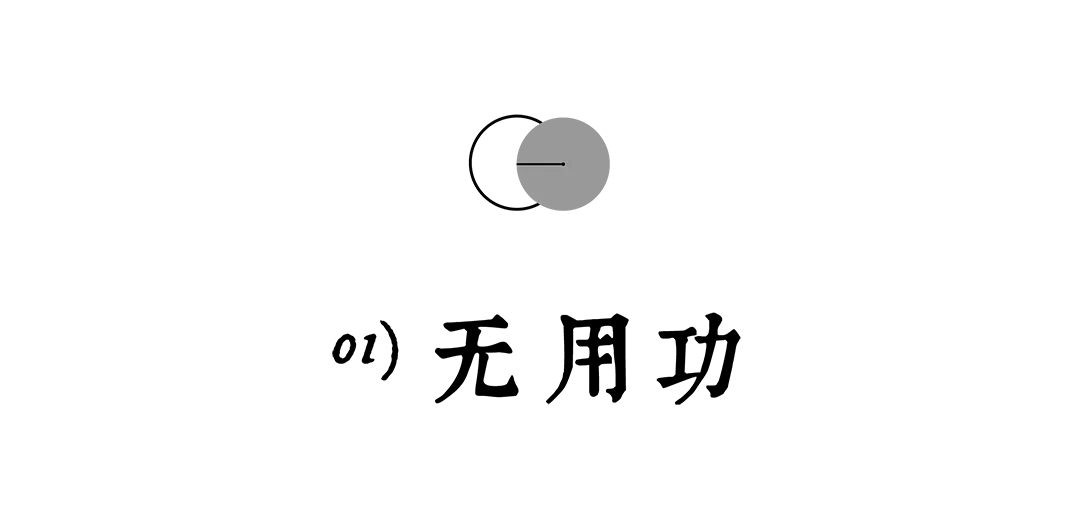
Meng先把黑白两块树脂胚泥使劲击打揉合,眼看白裹住了黑,黑色又逐渐以斑点或纹线状攻占白色,揉到某
个时间点,手里的这块物质像一个梦幻水墨的鹅卵石,这个令人舒适的美丽只持续了两秒钟,再揉,黑色一统
天下。
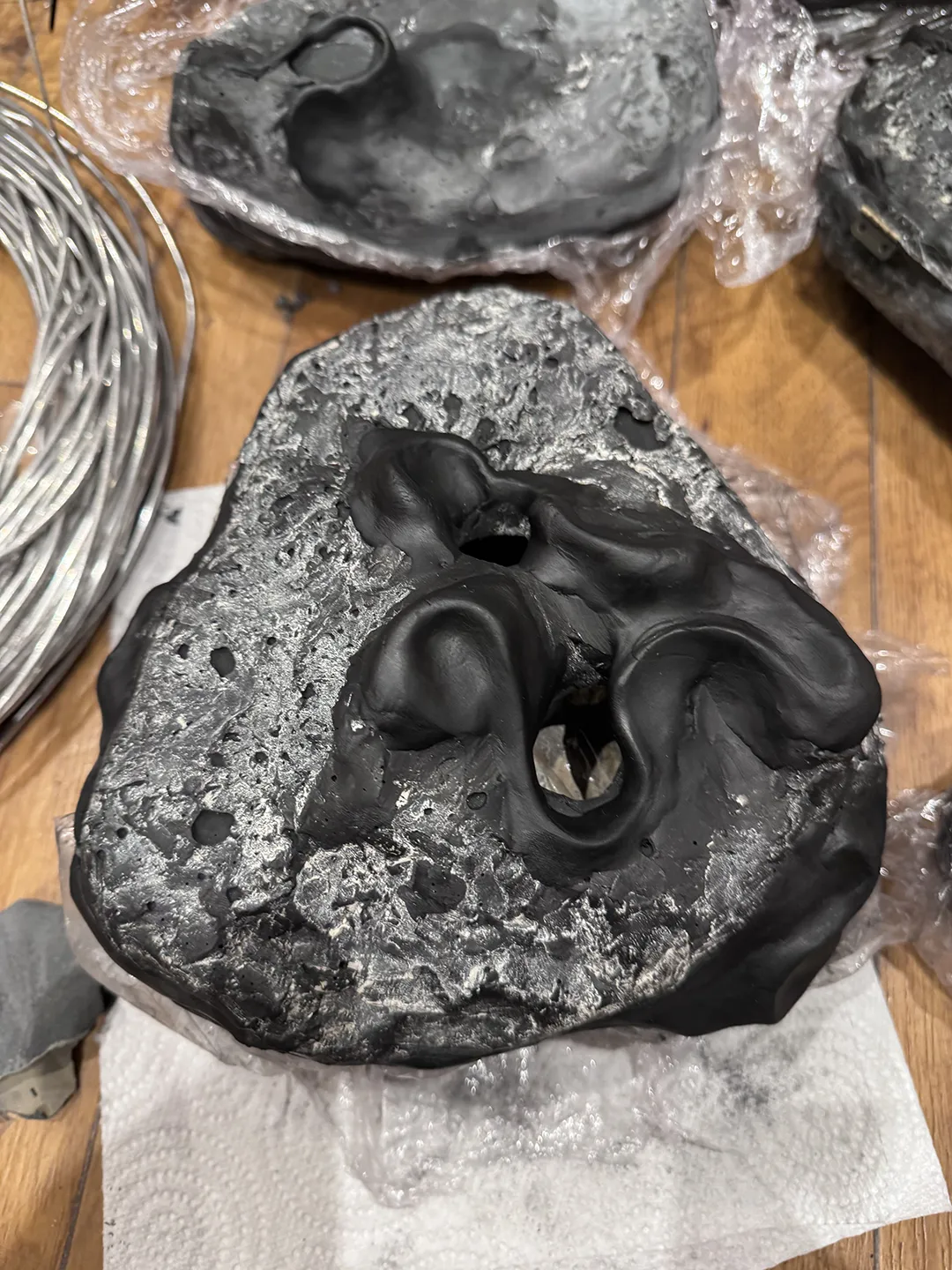
雕塑作品,柯伊伯样品系列
防陨石外观,包裹海星化石
他把光泽如黑珍珠般的黑泥搓成细条,再断开,揉成一颗颗豌豆大小的小墨球,他的胳膊酸了,手指尖像一个
上发条的机器,一个墨球按下去,再一个,有数不清的“再”,在一块木板上,他似乎在按一个黑炫的银河。
这是一个大面积的重复过程,黑色是一个表盘,白色是时间的滴答声。然而,接着发生了令人发指的戛然而止,
他把白色的胶状物决绝地刷在这银河的黑洞上,白又统治了黑, 目前的呈现使人心碎又使人入迷,
他就这样一层一层用不同颜色的其他材料,贝壳粉,泥土,矿物粉,牛皮胶,鹿皮胶,兔皮胶叠加上去。
一层的呈现消亡了另一层,天已经黑了,他开始打磨……
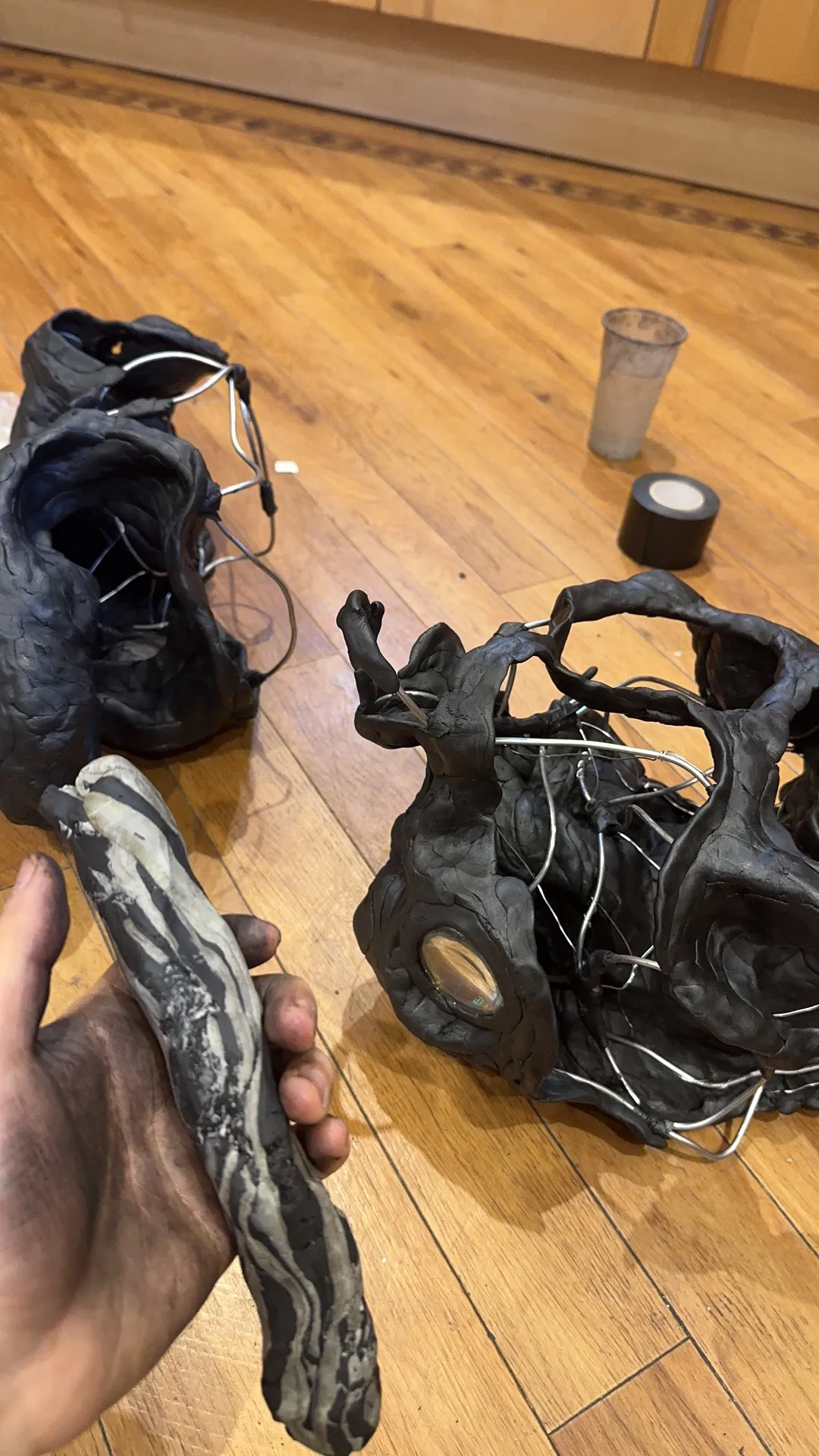
揉面与建构雕塑的雏形
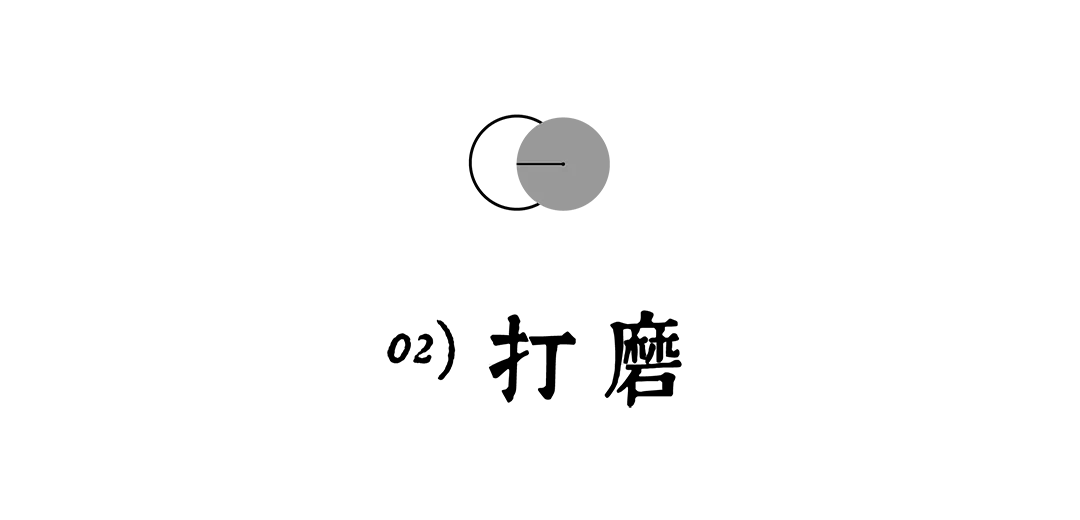
打磨,以达到如月亮表面般的光泽和形状。
就像某个“记忆剧场",在摩擦、消除、摧毁的过程中,在打磨产生的尘雾里,唤起了对记忆的
回忆。前一层的颜色就是此刻这个时间肌理的DAN,是一个病毒、一粒种子,或是一块霉斑,它们渐渐模糊的偶尔出现,生长
在快速解释抵达不到的地方。
过去和现在就这样或若或强的暧昧地链接起来。
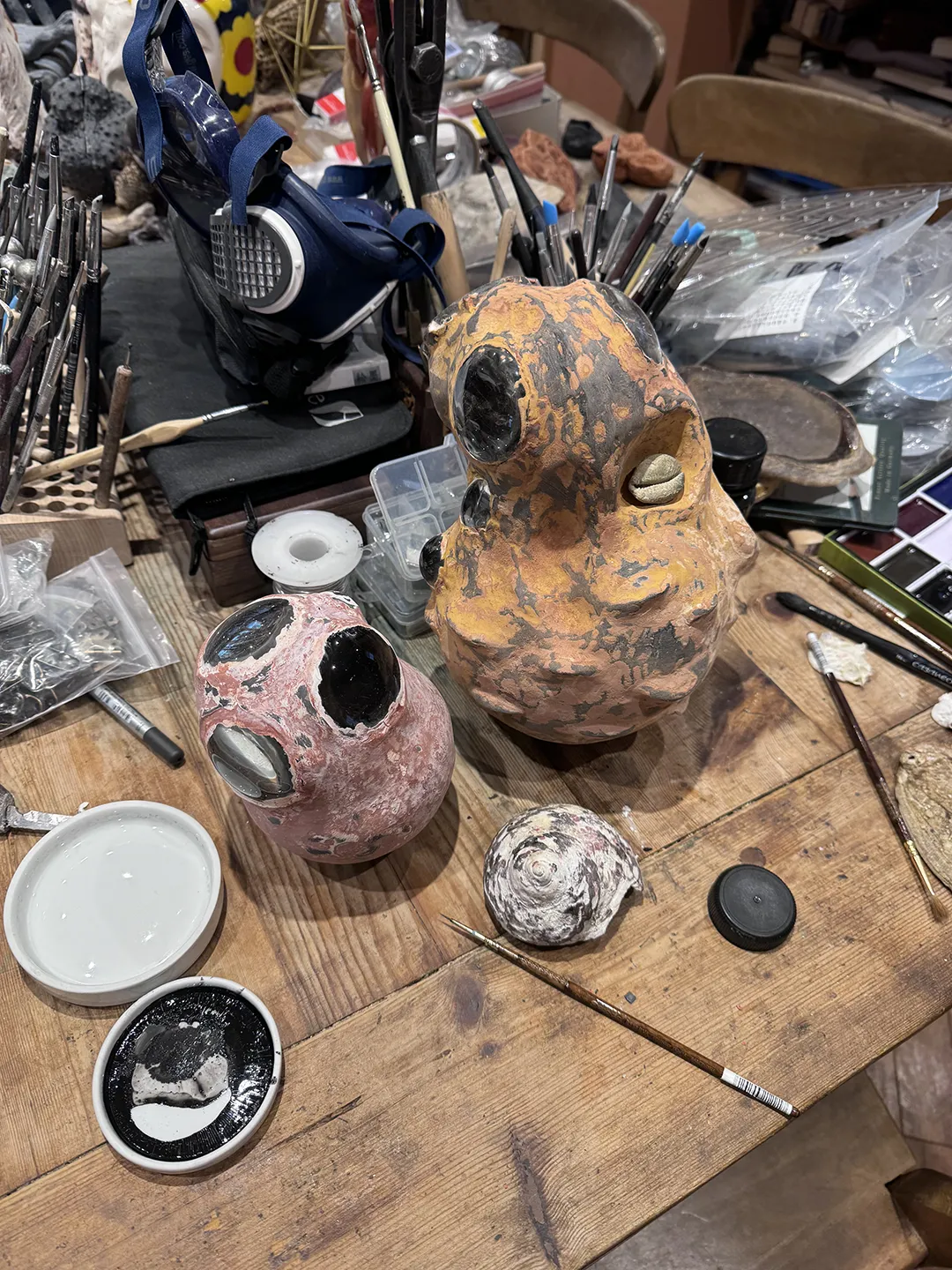
工作室状态与未完成的作品
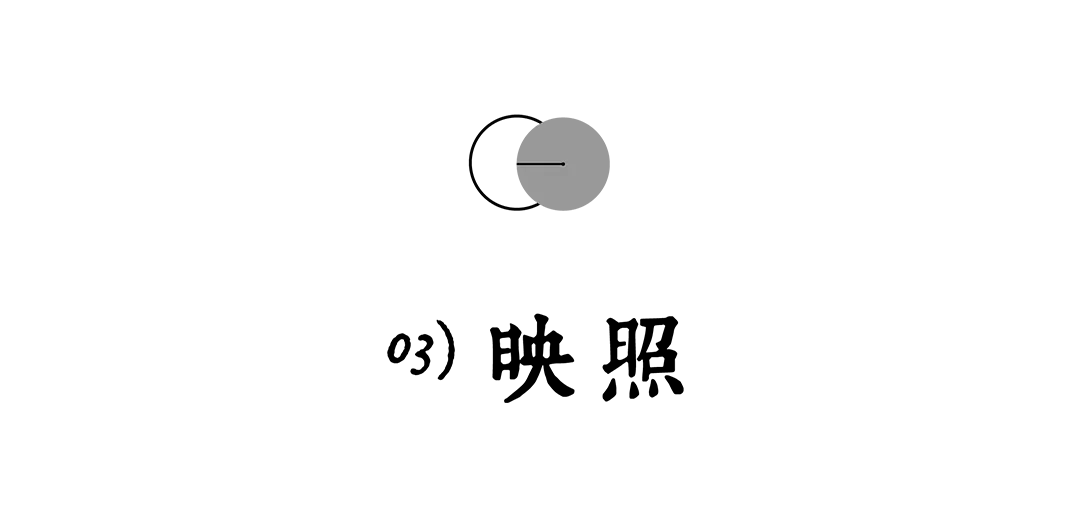
在Meng大部分作品里,都可以看见舞动的人型,他们并没有五官,类似梦境中大脑纤维的分叉,心脏血管的
脉动波,水母或者海星的触角的探险。
画中人失去实质,变成半透明,无视地球引力,存在却不可触摸。像是没有母亲的孩子,无法言说他们的由
来,他们似乎处于一种“阈限状态”,“在生与死之间徘徊”,孤独在“梦境与现实,过去与现在的某个临界点”。
舞动着的他们,身型的舞动丝滑符号化,通过模糊的梦境来对抗肉欲世界的统治,脱轨与消费造物时代的功
利,剥离肉体的具体叙事,星空翻转,灵魂离地。
是对马赛尔(Gabriel Marcel)的称之为“挛缩”(crispation)的东西中:一种紧绷、被硬壳覆盖的生命形
式——“仿佛我们每个人分泌出一种壳,它会慢慢变硬并囚禁我们。”产生的“有瑕”抗击。
在一个大的宇宙时间里,肉身终将透明化,我就是你,你也是我,虽然我们不在同一个花期,我们都可能是那
块海底沉默的化石,从有机到无机,舞动就是记忆密码,是化石上的痕迹,是板结世界的一条缝隙。
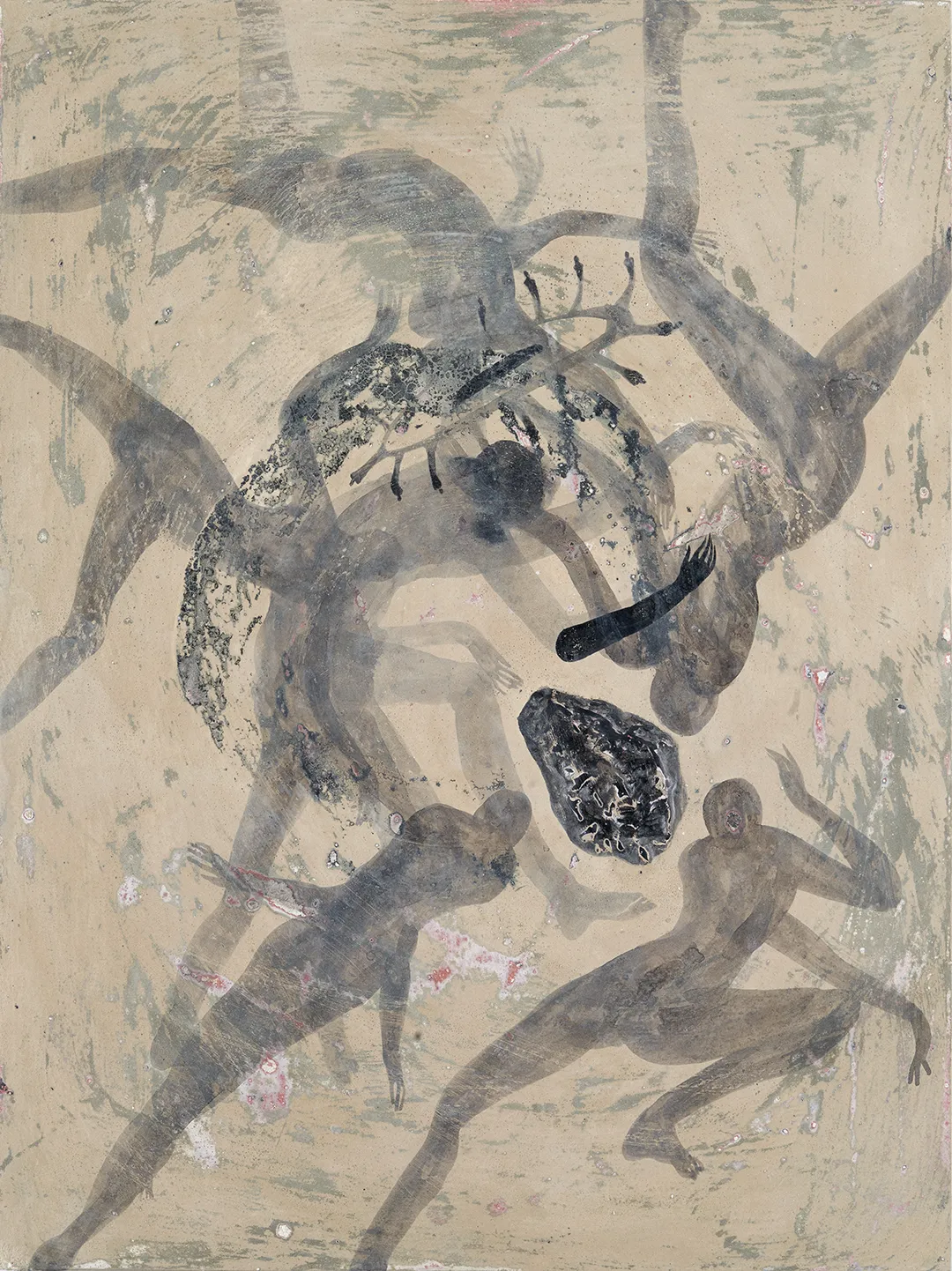
「持续利用」
61h x 46w cm
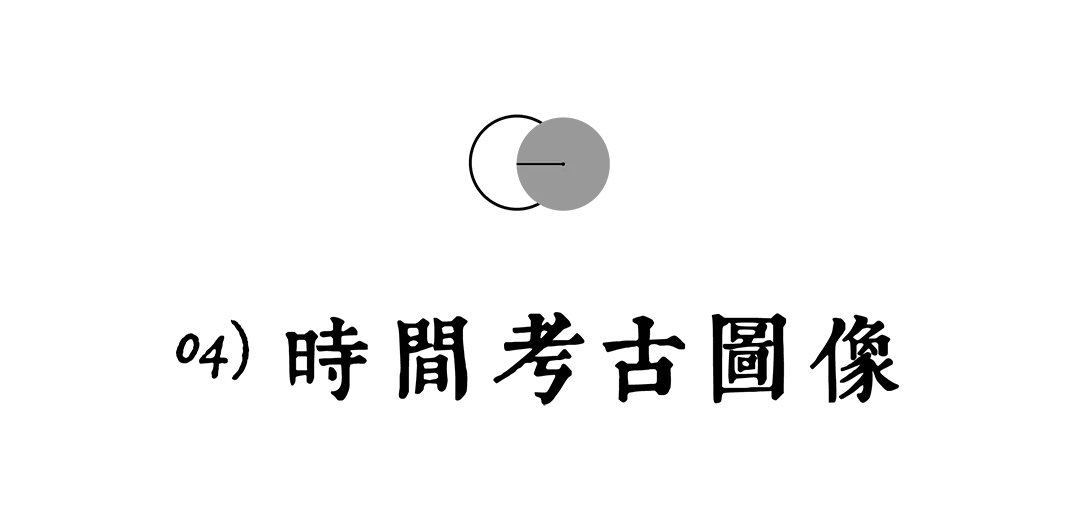
2022年,Meng和他的贝都因人向导抵达埃及撒哈拉腹地的无人区“白沙漠”,一眼望去,除了奇形怪状、大
大小小、孤零零矗立的白色岩体,一个梦境里的巨型白色蘑菇散落地带,空寂无声,似乎所有的生命体已被封
固在这些厉硬的白色里。然而他蹲下去,在撒哈拉的星空之下,仔细凝视,生命的迹象无处不在,此刻捡放在
他手心上是海胆化石和各种各样的贝壳。
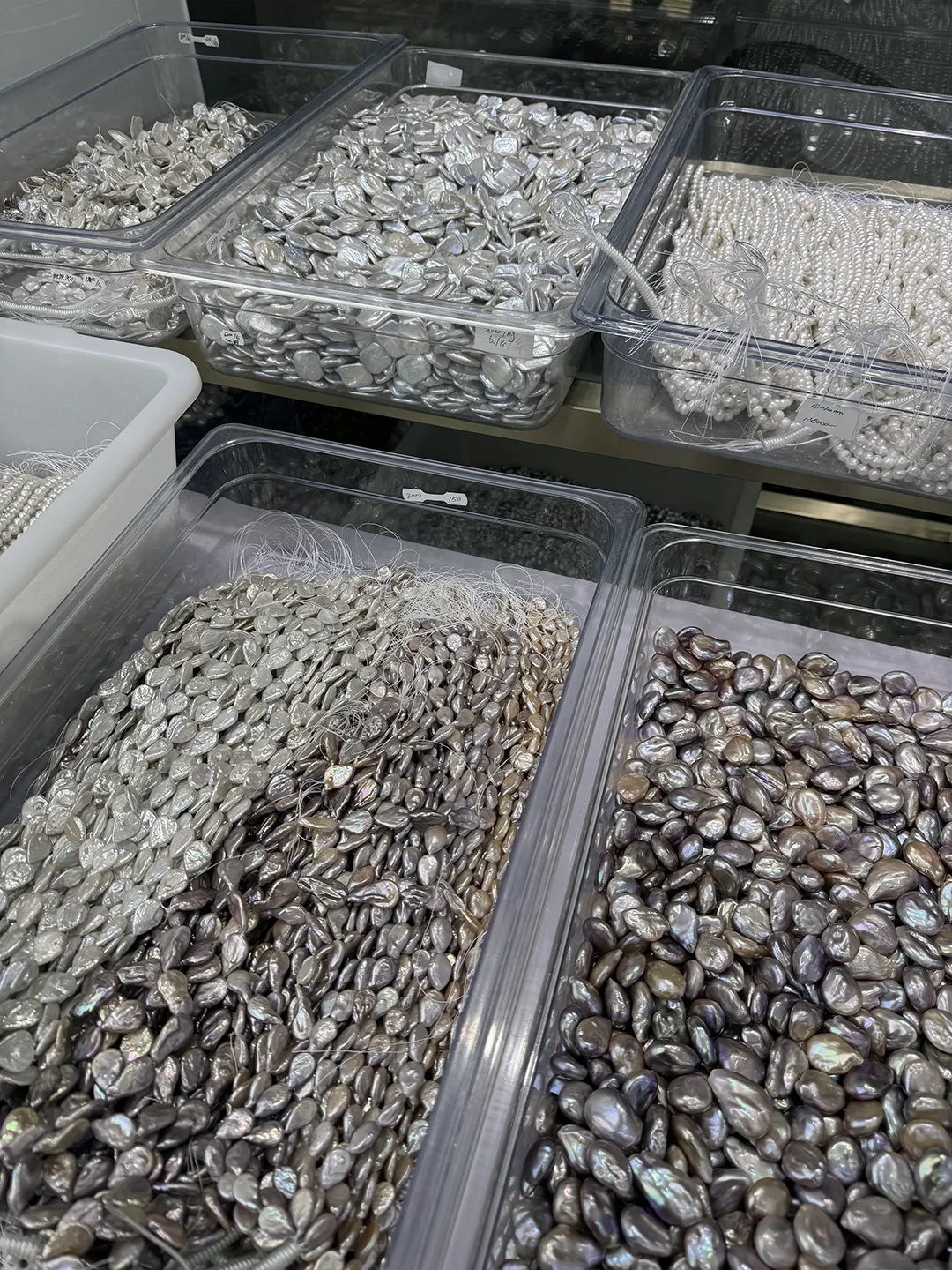
珍珠市场采买材料
他的大部分旅行乃至原地在工作室的购采都和这些以各种名词命名的“物”有关。东帝汶海蕾的化石、中华黑螺
化石、龙骨海星、木化石、汉代铜件、铁陨石、海星化石、珍珠、罗马的青铜箭头、古希腊的琉璃珠、大理石
弹珠……在他作品里,这些默不作声的名词就是一个录音,他就是录音师。
在这些对“物”的采集,拾捡的体验里,他的好奇和追问使这些碎片化的“物”重新诞生在他创作的非线性叙事
的混沌空间里,你彼时开花,我彼时萧杀,这虽然是一个偶尔性的置放创作,但却隐匿着他对有关议题的讨
论,来自不同时空,地理,文明的“物”的显嵌,见证着人类共同体的兴衰,在漂移不定的过去、现在、未来的
叠加和演绎里,生成一种视觉上的“时间考古图像”。
“物”此时是大的,是一种绝响。
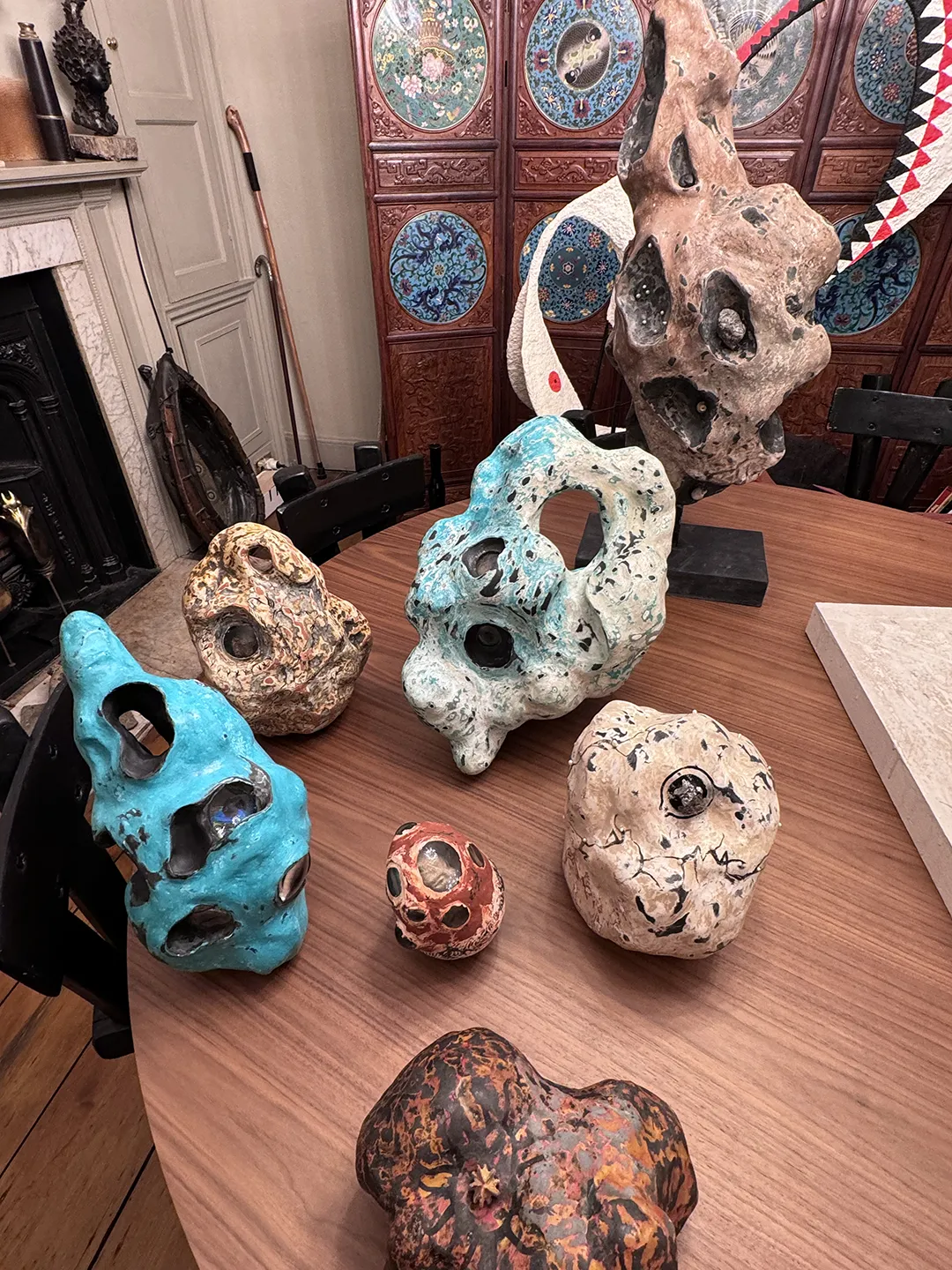
工作室半成品集合
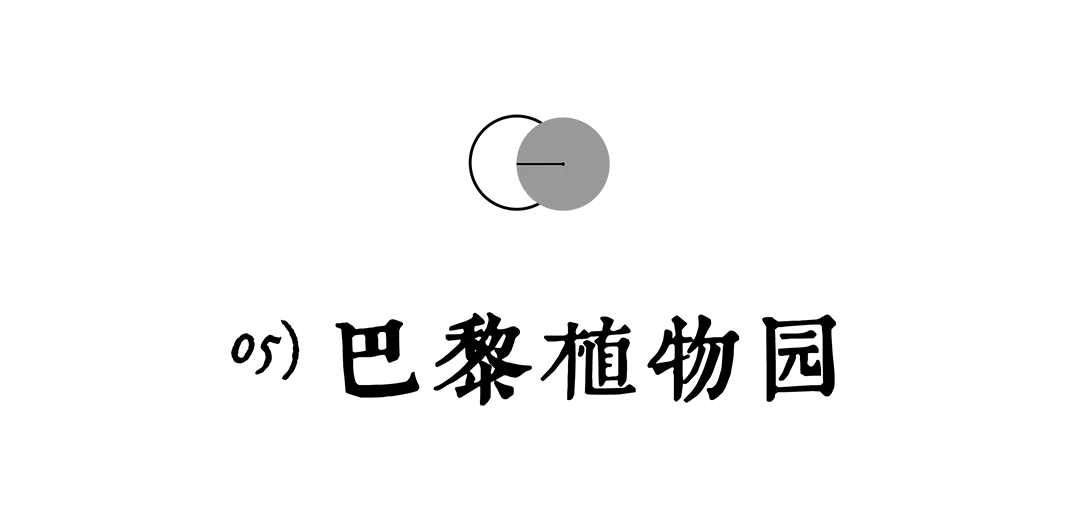
下午四点,Meng从伦敦来到巴黎植物园,他和植物园研究“蕨类”的朋友一起在巨型玻璃暖室旁的林荫道下散
步,阳光正好,他止步在一株植物前,他刚刚从巴拿马的一个孤岛做驻地回到欧洲,他们谈起了这株突然被光
顾的植物,某些叶子上有很规则的裂纹,他说,这是巴拿马切叶蚁的杰作,在叶子幼嫩,还卷在一起的时候,
被切叶蚁的幼虫咬了一口,等它长大舒展开来,就变成一串小洞了,呈现出有规律的几何花纹。
在他的作品里,对这种消亡或存在的“它”物种的闲逛无处不在,藏匿或突显,这种集成、混杂、混沌,以难以
讨论的不清晰状态构成了他对虚空的表达。
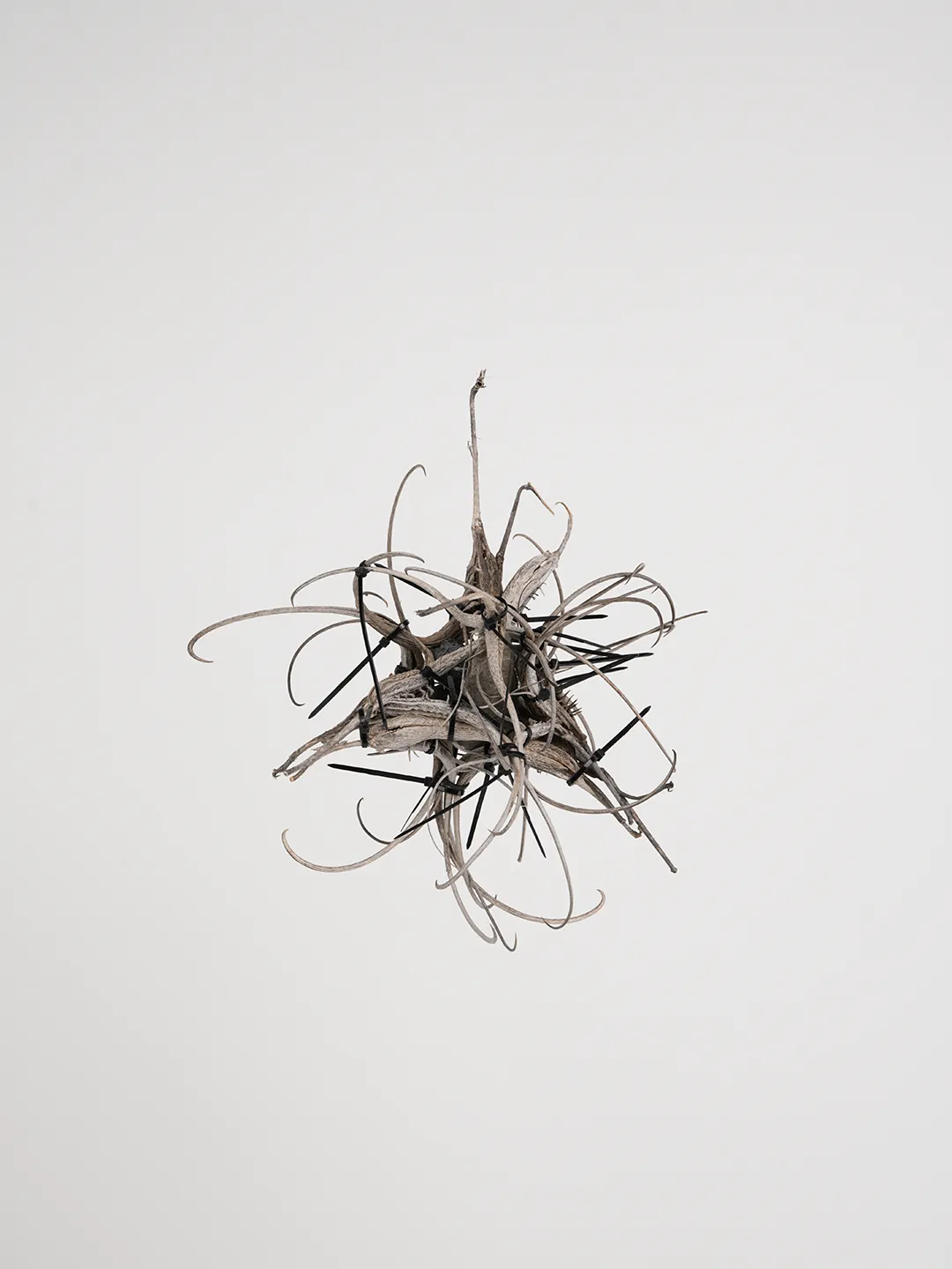
马达加斯加勾麻,塑料,危地马拉玛雅陶瓷人偶
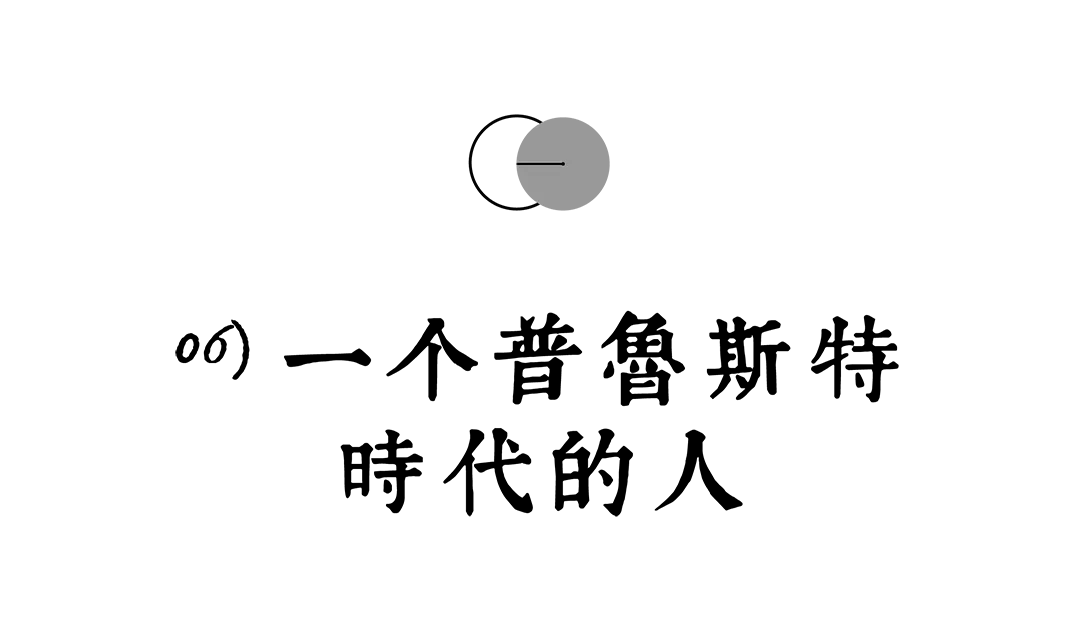
Meng是艺术家,却有科学家的缜密逻辑思维。
他收集了很多远古海洋生物的化石,各种琥珀,某种鱼的璀璨结石,热带雨林的鸟巢,也有被标本的神情专注
的寒鸦,眼神依然深遂。
这些死亡了却又留下物理痕迹的地球生命,角角落落都是他有关对时间沉淀的某种收藏。
他自己就像一个普鲁斯特时代的人,画画后写诗,或写诗后画画。他年纪轻轻,却痴迷与各种舞台,音乐剧,
舞剧,喜欢的剧他重复看,一看再看。这次他邀请我去看Pina Bausch的Wuppertal舞团著名的剧目「蓝胡
子」,Meng说,「蓝胡子」1977年在德国首演,音乐取自Béla Bartók的同名歌剧《蓝胡子》,由于音乐版
权保护,Pina Bausch当年引起震动的这个舞剧停演了好多年,刚刚版权在英国解封。
当铺满树叶的舞台被灯光定格,倒地的女人一次一次被男人拖拽,女人挣脱又纠缠的大腿慢慢凋谢,满场的声
音都是暴力撞击出的裸声,复读机重复往返于Béla Bartók的歌剧声里,我就这样被这个突然袭击打中了,也
在这个舞台的冲击与阵亡里。
感谢我一直神奇的遇见。
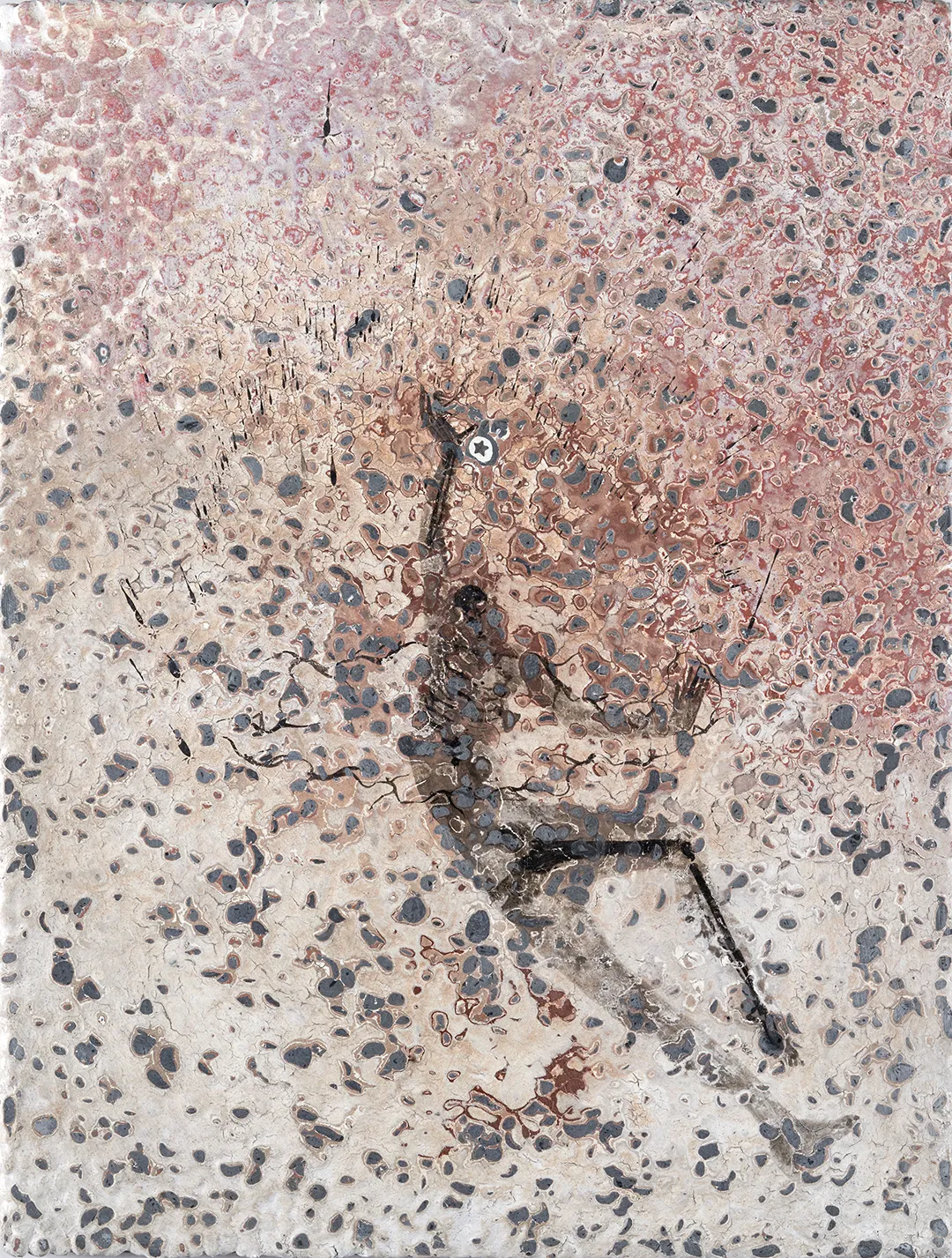
「爱慕者」
木板、墨、矿物粉,树脂、贝壳粉、鹿皮胶、蜡
46h x 61w x 5.5d cm
2024
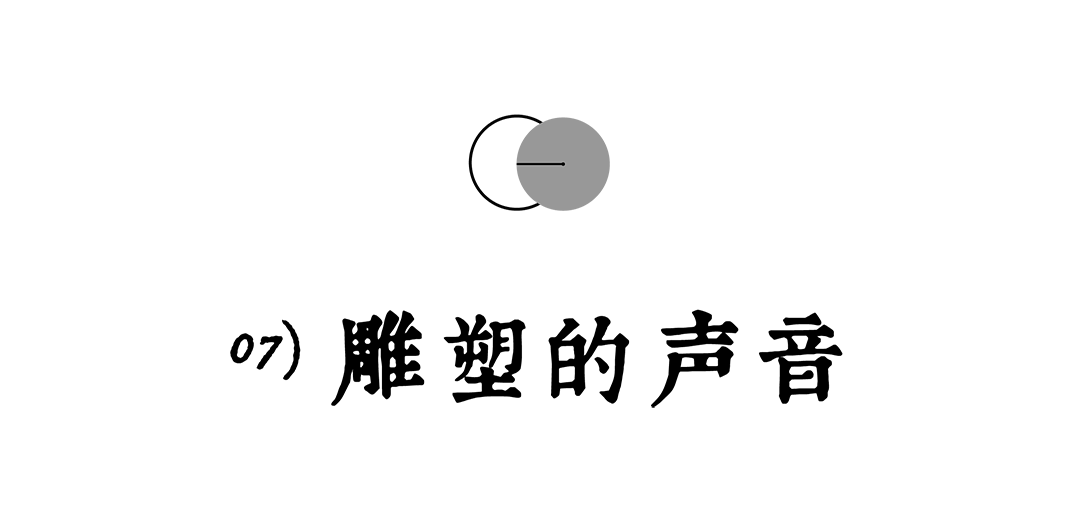
它们发出的声响能够吸引祖先的降临。
日本禅僧道元写过「有时论」:有时高高山顶立,有时深深海底行。有时丈二狮子,有时露柱拂头。有皆时
也,时皆有也……
Meng的雕塑里有古老的化石,那些化石中的动物生活在亿万年前,但在在他的雕塑中以新的方式活了过来,
成了我们能看到的舞动的精灵,和亿万年后的我们产生了连接。
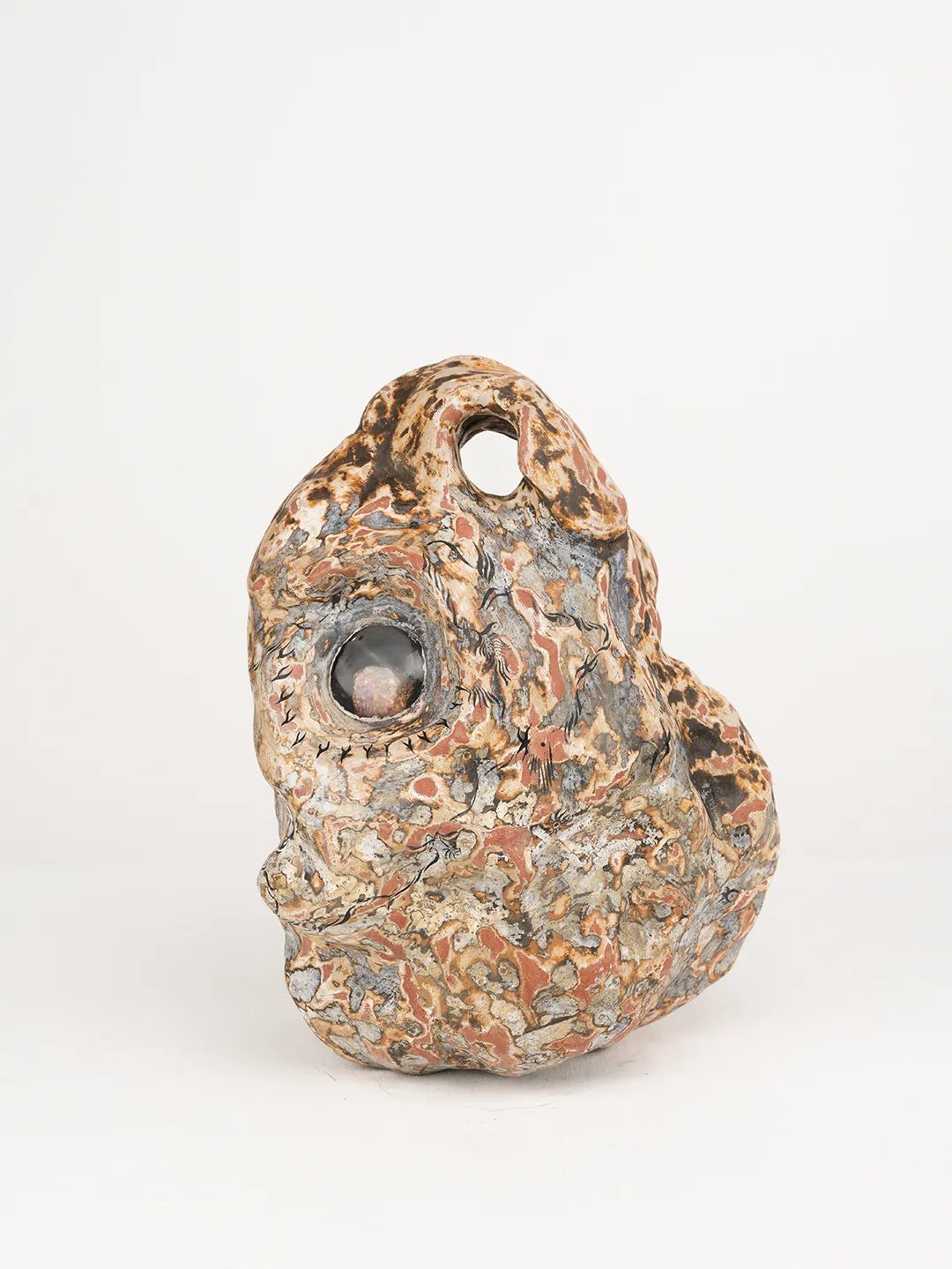
雕塑作品,造石系列
内部含有罗马青铜箭簇,希腊琉璃珠,化石,矿石等
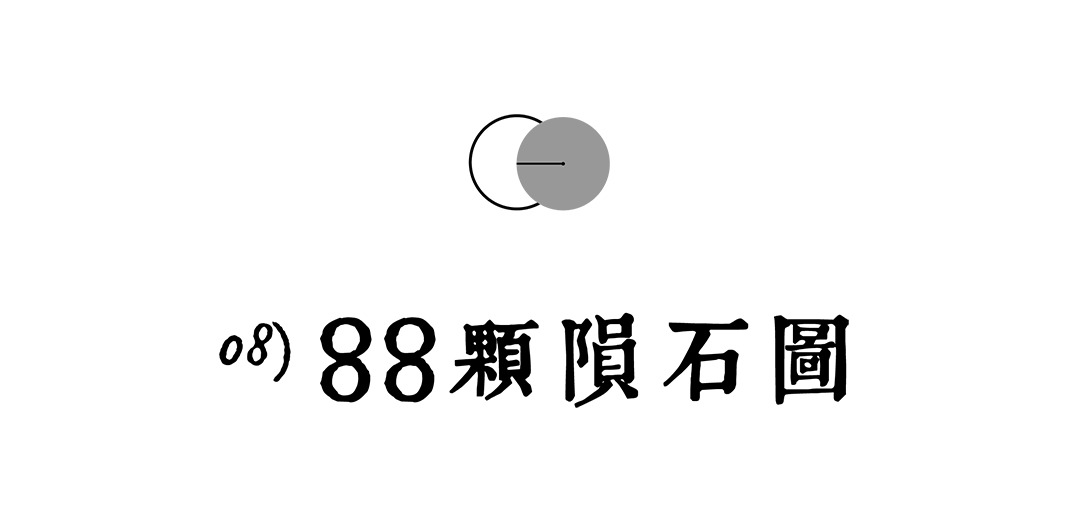
祭奠瓦尔特.本雅明一段文本:
在那个时代,地球腹中的石头和天空中高悬的众星,仍然在关怀人的命运—不同于今天,天地在自然规律解释
下变得很冷漠,万事万物对人们的遭遇都漠然置之。天地间一片静默无声,没有任何与人交流的声音,更听不
到对人们的任何指引的声音。那些没有被发现的星体,已没有一个能在占星术中起作用。还有许许多多独特的
新发现的石块,都被严格地进行科学测量、称重、检验其密度、判断其属性……“但是,石块不再向我们诉说
什么,也不会带给我们什么好处和什么启示。它们跟人类能够交谈的光阴,已经一去不返了。”
